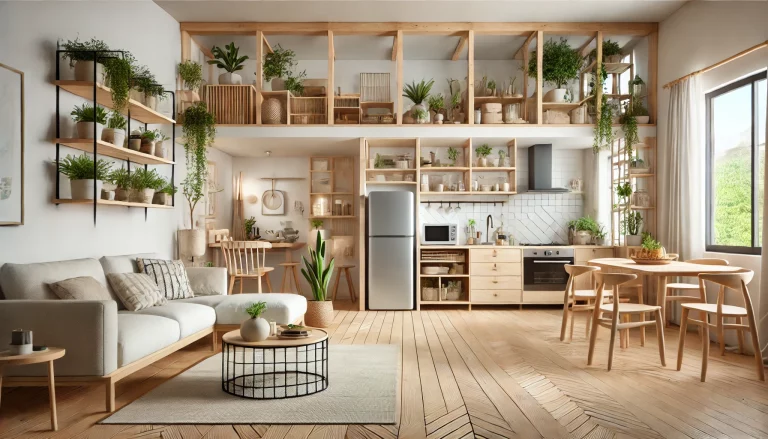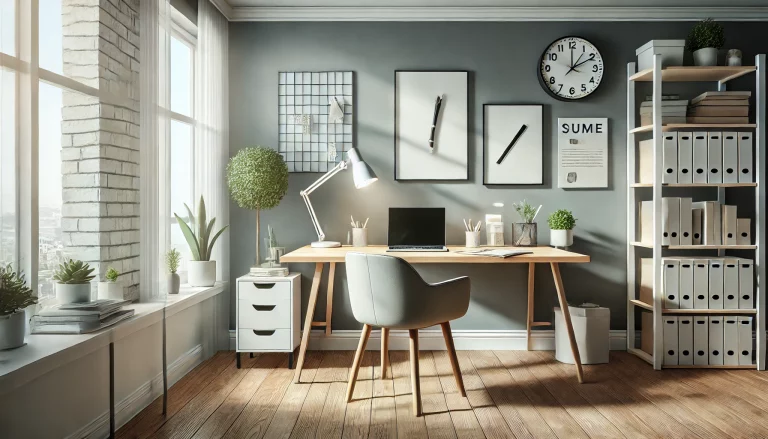

In the modern workplace, we are often surrounded by distractions, overcomplicated processes, and endless tasks that stifle creativity. Minimalism offers a solution by encouraging us to simplify our work environment and focus on what truly matters, creating space for innovation, fresh ideas, and better productivity.
In this article, we’ll explore how embracing minimalism in the workplace can boost creativity by reducing stress, increasing focus, and creating an environment that fosters innovation and effective problem-solving.
A cluttered workspace can create mental clutter, making it harder to think clearly and focus. Minimalism encourages us to declutter our desks and work areas, allowing us to focus better, feel less overwhelmed, and stimulate creative thinking.
How to simplify your workspace:
A simplified workspace creates mental clarity, which can help foster innovative thinking and problem-solving.
Workplace meetings often become long, repetitive, and unfocused, draining time and energy. Minimalism in meetings encourages us to prioritize what’s truly important and eliminate unnecessary discussions or activities that don’t contribute to the creative process.
How to embrace minimalism in meetings:
By simplifying meetings, you can boost creativity by giving more time for individual thinking and collaboration.
Distractions are one of the greatest challenges to creativity. Whether it’s a noisy environment, constant notifications, or multitasking, distractions can prevent us from thinking deeply or coming up with new ideas. Minimalism helps us eliminate distractions, allowing us to focus better and channel our creativity into meaningful work.
How to minimize distractions:
By minimizing distractions, you create a focused environment that allows creativity to thrive.
In the workplace, we often rely on complex processes that slow us down and hinder our creativity. Minimalism encourages us to simplify processes by eliminating unnecessary steps, using more efficient tools, and focusing on what matters most.
How to simplify processes:
Simplifying processes removes obstacles to creativity, allowing for faster problem-solving and more innovative ideas.
Creativity doesn’t thrive when we are exhausted or mentally drained. Minimalism encourages us to take mindful breaks, allowing time for rest, relaxation, and mental rejuvenation. By taking breaks, we can recharge our minds and return to work with fresh perspectives and ideas.
How to take mindful breaks:
Mindful breaks help you avoid burnout and keep your creativity flowing throughout the day.
In the workplace, we often juggle multiple goals, which can lead to scattered attention and a lack of focus. Minimalism encourages us to simplify our goals, focusing on the most important tasks and projects that align with the company’s vision and values.
How to simplify your goals:
Simplifying your goals allows you to focus on what’s most important and channels your energy into meaningful work.
Minimalism not only impacts individual productivity but also the culture of a workplace. By encouraging a simplified approach to work and focusing on what truly inspires creativity, you can help foster a culture of innovation and open-minded thinking.
How to foster a culture of innovation:
Fostering a culture of innovation allows creativity to flourish and leads to better solutions and new ideas.
Perfectionism can stifle creativity by creating unrealistic expectations and a fear of failure. Minimalism encourages us to embrace imperfection, allowing room for experimentation and creative risk-taking.
How to let go of perfectionism:
By letting go of perfectionism, you create space for more risk-taking and experimentation, which is essential for creative growth.
A rigid work environment can stifle creativity and prevent employees from reaching their full potential. Minimalism encourages us to create a flexible work environment that fosters creativity by offering freedom and autonomy.
How to build a flexible work environment:
A flexible work environment promotes creativity by allowing employees to work in ways that suit their individual needs.
Minimalism is not just about reducing clutter — it’s about creating space for creativity and innovation to thrive. By simplifying your workspace, goals, processes, and approach to work, you can unlock new levels of creativity and productivity.
Remember, less is more when it comes to creativity in the workplace. Embrace minimalism to boost innovation, problem-solving, and creative thinking in your organization.